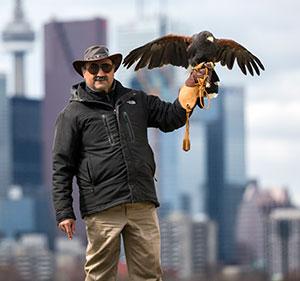(CNN) — Ten years after what came to be known as the "Miracle on the Hudson," it's still amazing that everyone aboard US Airways Flight 1549 survived.
Shortly after pilot Chesley "Sully" Sullenberger took off from New York's LaGuardia Airport on January 15, 2009 with 154 passengers and crew, two eight-pound geese flew into each of the plane's twin engines. Suddenly both engines weren't working and Sullenberger faced a gut-wrenching decision. He had to choose between trying to reach an airport runway, or attempting a daring water landing. As we now know, Sullenberger aimed for the Hudson River -- which investigators eventually saidwas the only choice he could have made that would have saved the plane.
Flight 1549 reminds us that we're not the only creatures flying in the sky. It raised awareness about aircraft bird strikes and prompted National Transportation Safety Board investigators to warn airports "to take action to mitigate wildlife hazards before a dangerous event occurs."
From 1990 to 2016, the annual number of reported bird strikes in the US increased from 1,850 to 13,408, according to the Federal Aviation Administration. That's up more than 700%. Globally, from 2008-2015, the International Civil Aviation Organization said nearly 98,000 bird strikes were reported in 105 nations. The estimated cost of all aviation bird strikes, according to the European Space Agency, is more than $1 billion a year.
When airplanes and birds collide, you often get "snarge." Scientists at the Smithsonian Institution came up with the term to describe tissue and gooey remains that are still attached to aircraft after a collision, said bird strike expert Mike Begier, who took part in the investigation of Flight 1549.
The big lesson learned from Flight 1549, Begier said, was, "It can happen. It was no longer an abstraction. We almost had that catastrophic event with the Miracle on the Hudson, but obviously there was a highly skilled crew on that plane and that did not happen." Now, with heightened awareness and better airport management of wildlife, Begier said another bird strike as terrifying as Flight 1549 is perhaps a little less likely.
Andm it's not just birds. Hundreds of strikes are reported involving bats -- and even reptiles. At New York's JFK airport, hundreds of diamondback terrapin turtles have been known to crawl from Jamaica Bay onto airport property -- sometimes even getting onto runways.
Preventative strategies
The most effective way to force birds away from airports is to take away their habitat, wildlife is going to come in for three reasons: food, water or shelter. Remove those and you'll force birds to go elsewhere.
As a final option, some airports, such as New York's LaGuardia and JFK have resorted to rounding up geese and gassing them to death. Emerging technology may provide other tools. The FAA has spent more than 10 years trying to perfect special radar that detects birds. It has struggled to track birds because they're fairly small, but experts said the FAA has been improving it.
Jet engine manufacturers have tried to design screens to protect engine intakes from birds, but so far, experts say nothing has worked well enough to be practical due to air-flow and excessive weight issues.
At the time of Flight 1549, bird-strike avoidance training was not included in US Airways' ground school curriculum or the simulator syllabus, according to the National Transportation Safety Board.
Industry lobby organization Airlines for America said in a 2016 statement that pilots for its members "undergo extensive flight training" which includes "preventative strategies."
Sullenberger's former employer US Airways has merged with American Airlines, which said in a statement this week that "bird strike preparation for our pilots is an important and standard component of training."
Achieving zero bird strikes at airports would be difficult, if not impossible, but the goal would be trying to get as close to zero as possible, said Begier. "We can set benchmarks -- and that's actually a discussion that's going on in the airport community right now."
Experts say focusing on effective wildlife management and pilot training will go a long way toward preventing future incidents like Flight 1549. The outcome of the next bird strike emergency may not be as miraculous.
CNN's Aaron Cooper contributed to this report.
Hawkeye is the ONLY Toronto and Golden Horseshoe area licensed Pest Bird Control Specialist offering PERMANENT REMOVAL & GUARANTEED RESULTS. We are uniquely qualified under permits and licenses to PERMANENTLY REMOVE AND CONTROL pest birds such as pigeons, seagulls, geese, starlings, and swallows using a variety of methods including Birds of Prey. Additionally, we offer cleaning and disinfecting of affected areas and facilitate the future exclusion of birds.
Now with 7 Locations ( 6 In Canada and 1 in the U.S), we are ready to serve you better in Acton, Toronto, Oshawa, Bowmanville, two locations in Mississauga and West Palm Beach in Florida.
Contact us today or Email us at [email protected] if you need help with pest bird control and/or pest bird removal.
Pest Birds such as Cormorants, Crows, Ducks, Doves, Geese, Grackels, Seagulls, Pigeons, Robins, Sparrows and Starlings.














